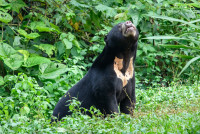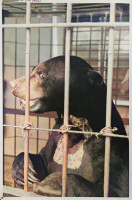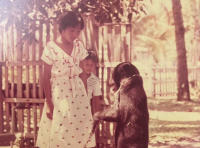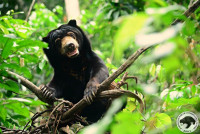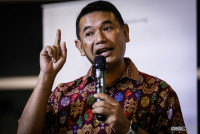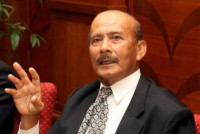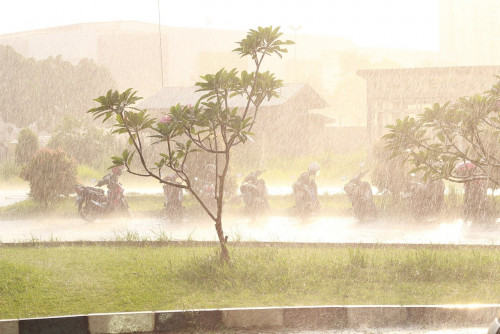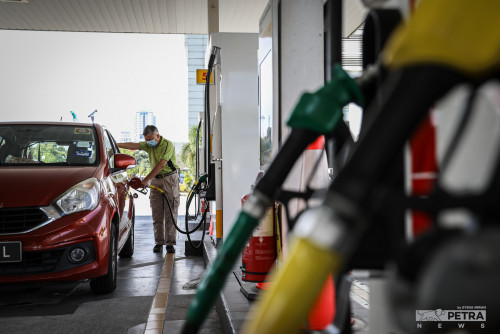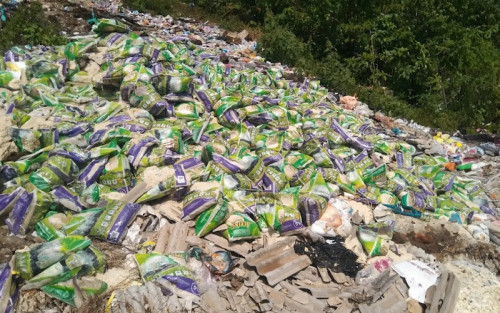SANDAKAN – On May 20 this year, the world’s only conservation centre for sun bears, the Bornean Sun Bear Conservation Centre (BSBCC) in Sepilok, here, was shocked over a pleasant surprise.
One of its female captive bears, Bintang, had given birth to a female infant bear.
Bornean Sun Bear Conservation Centre (BSBCC) founder Dr Wong Siew Te said the birth was completely unexpected. But it was bound to happen as the rescued bears at the centres have grown older. They are also kept mixed at a compound that is surrounded by the forest.
It was the first sun bear’s birth in captivity at the centre in the last 10 years.
The cub, later named "Luna" by supporters of BSBCC on Facebook, was at first taken care of by Bintang.
.jpg)
However, as the BSBCC team monitors Luna’s growth progress, on the eighth day, Luna was discovered to be ill. Its ears and tail were gone from Bintang’s overgrooming, and its temperature and oxygen level were lower than normal.
“We had no choice but took Luna away from Bintang and placed the cub in our care. We fed it with goat’s milk and put it under an infrared heat lamp to raise its temperature. Luna only recovered after several weeks of intensive care and treatment.
“Thankfully, we had an in-house vet. We also assigned two to four staff to attend to Luna 24-7,” Wong said in an interview with The Vibes.
The unexpected incident had however cost a lot of money from the centre. As such, BSBCC had raised funds through its adoption programme promoted online, in which an individual could donate RM300 to adopt Luna for a year.
.jpg)
“Luna’s formula milk alone cost RM95 per can which could last for only about three to four days – even faster as Luna grows bigger.
“BSBCC has also been short of funding due to the pandemic; we had lost revenue from visitors for more than a year now,” Wong said.
Today, Luna, over five months old, is a healthy and active cub, and an excellent and confident tree climber.
Wong said that Luna is an excellent accomplishment by the centre which now has 25 staff including Wong, as there has been very few captive breeding of sun bear in the world.
“Despite that, this is an accidental event, we take this opportunity to learn the process of raising an infant bear. I’d like to see the sun bears as my teachers as I learn about them through their activities and behaviours,” he said.
.jpg)
Wong said Luna’s birth has received a lot of attention from researchers from across the world.
“Of course, this is a rare situation. I have been keeping a detailed report of Luna’s progress for the use of researchers and experts in the future,” he said.
Future of captive breeding
Since an accidental birth has proven to work, does it mean that captive breeding is possible in the future?
When questioned with this, Wong said the BSBCC, is still not ready to conduct a captive breeding programme for the bears.
“The first thing we lack is space. When I first designed BSBCC, our capacity could only cater to 40 bears. Now, we have 43 rescued bears. We could not add any more.
“However, it is still possible. What we need is a safe forest for these bears. When the forest is safe for them, we could release the bears and thus would have more space for breeding. We also need to think about the future of these cubs – after we breed them, we must be able to raise them and release them into the forest.
“So it is only possible if we have the awareness among the people not to harm sun bears, not to poach them and not to keep them as pets.
.jpg)
“We can have safe forests or safe homes for the sun bears through tight enforcement by the government as well as active awareness programmes,” he said.
For now, Wong said that he is drafting a plan named the Sabah Sun Bear Action Plan, which will be proposed to the government once it is completed.
“We are hoping that our proposal would be tabled at the state assembly, and when approved, would receive the funding that it needs.
“It will be a huge step to the future of our sun bears,” he said.
Malayan sun bears are the smallest bears in the world and are only found in Southeast Asia.
The total sun bear population has declined by at least 30% in the last 30 years, contributing to sun bears being classified as 'vulnerable' in 2007 meaning they are at high risk of extinction in the wild. – The Vibes, October 19, 2021



.jpg)

